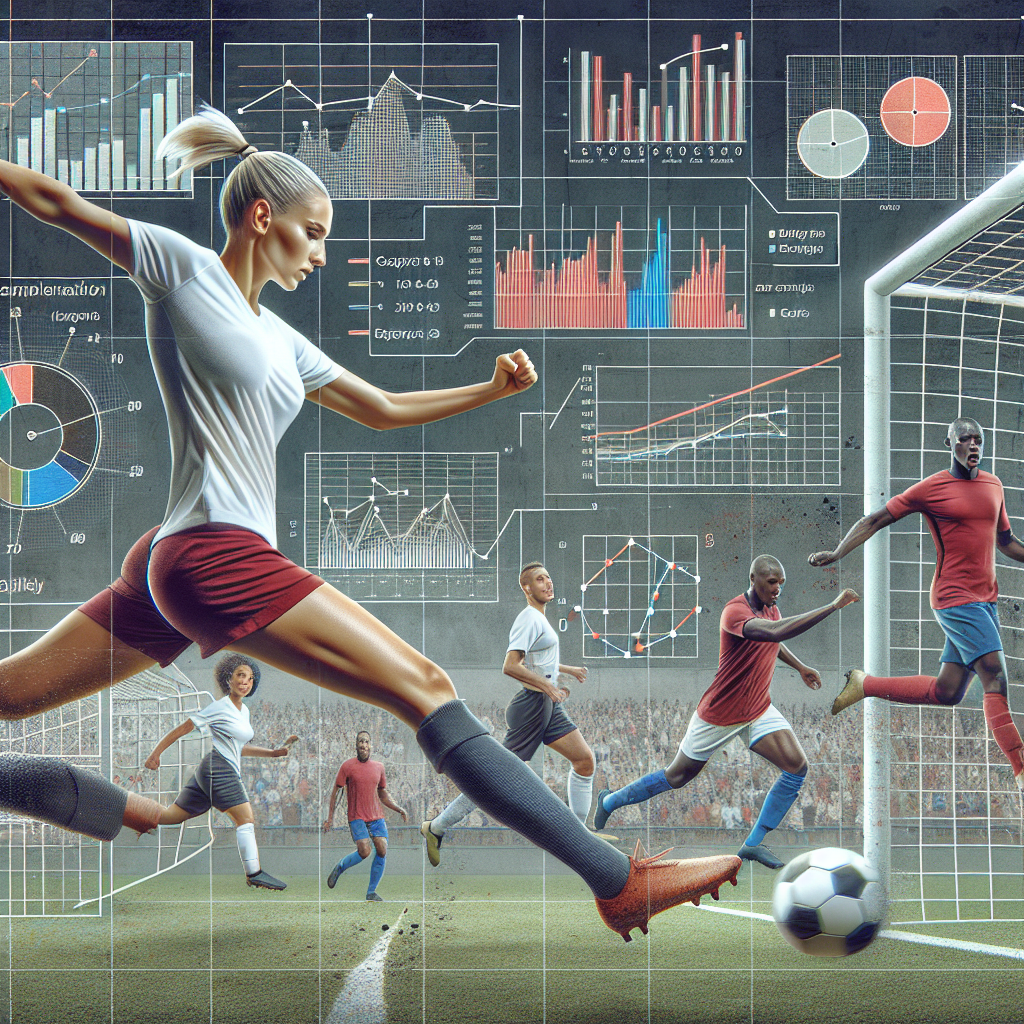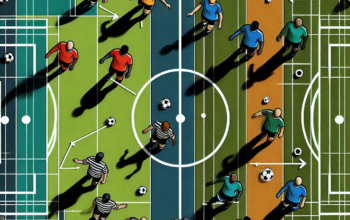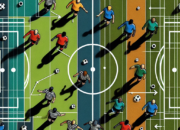Introduction
The landscape of soccer has undergone significant changes over the years, with evolving strategies, player skills, and technological advancements influencing goal-scoring patterns. In 2025, the current trends in goal-scoring patterns in modern soccer present a fascinating study for analysts, fans, and players alike. From the rise of data analytics and its impact on player performance to the tactical shift towards pressing and solidarity in defensive lines, understanding these trends is crucial for anyone interested in the beautiful game. This article explores prominent trends in goal-scoring patterns in modern soccer, examining how adaptations to coaching methodologies and player training have shaped the new era of football.
Analyzing the Impact of Data Analytics on Goal-Scoring
The use of data analytics in soccer has skyrocketed in recent years, fundamentally altering how teams study and prepare for matches. With sophisticated software and analytical tools, clubs can delve deeply into the metrics that influence goal-scoring opportunities. This shift toward a data-driven approach allows coaches to identify patterns within their teams and opponents, resulting in tailored strategies that can optimize scoring chances. Teams are now focusing not only on how many goals are scored but also on the quality of chances created. Metrics like Expected Goals (xG), which quantifies the likelihood of a goal based on various factors, have become essential in assessing player and team performance.
Moreover, clubs are investing heavily in performance analysts who track players’ heat maps, movement patterns, and passing efficiency during games. This analytical insight has led to a more dynamic understanding of how players can exploit defensive weaknesses. In 2025, we observe that forwards are now trained to make their runs based not merely on instinct but on data-backed insights about opposing defenders’ vulnerabilities. As this trend continues, the relationship between analytics and effective goal-scoring is likely to become even more pronounced.
The Evolution of Tactical Approaches to Goal-Scoring
Tactical evolution is another key factor shaping goal-scoring patterns in modern soccer. Teams are increasingly adopting flexible formations that allow for a fluid style of play. The traditional 4-4-2 formation has seen a decline with the emergence of formations such as the 3-4-3 or the 4-2-3-1, which provide added attacking options and greater movement in the final third. This tactical flexibility allows teams to adapt mid-game based on their opponent’s weaknesses, leading to a rise in unconventional goal-scoring avenues. Consequently, the modern forward must possess not only traditional striking skills but also the intelligence to interchange positions and create opportunities.
Furthermore, pressing has become a pivotal tactic in contemporary soccer, particularly for top clubs. Teams now engage defenders higher up the pitch, aiming to win back possession quickly and exploit the disorganization of opposing defenses. This high-pressing strategy has increased the frequency of counter-attacks, which has a significant impact on goal-scoring patterns. In 2025, we see clubs benefiting from this approach, converting turnovers into clinical goal-scoring chances with remarkable speed. The result is a more chaotic but exciting brand of soccer, where goal-scoring becomes a byproduct of relentless pressing and swift transitions.
Influence of Player Training on Scoring Ability
The training regimens designed for professional soccer players have evolved dramatically in recent years, contributing to the burgeoning goal-scoring trends. Coaches now prioritize specific skill sets tailored to enhance improvisational ability and shooting precision. Training sessions have shifted towards creating situations that replicate match scenarios, helping players develop not only their technical skills but also their decision-making capabilities. This hands-on approach focuses on repetition and consistency, allowing players to become proficient scorers in diverse situations.
Additionally, advancements in sports science and fitness have allowed players to maintain peak physical condition over longer periods. Modern players possess higher stamina levels, enabling them to sustain a high-intensity performance throughout the match. This endurance becomes particularly crucial in the closing minutes of a game when fatigue typically sets in. In 2025, we see a rise in last-minute goals as players are now better prepared to finish strong, catching tired defenses off guard. These sustained levels of performance are reshaping the way goal-scoring occurs, with an increase in goals resulting from late surges and sudden bursts of energy.
Moreover, the mental aspect of goal-scoring is being acknowledged more than ever. Psychologists are now part of training setups, helping players to handle pressure and maintain composure in high-stakes situations. Techniques such as visualization and mental conditioning are employed to enhance a player’s confidence in one-on-one scenarios, penalty shootouts, or critical moments in a match. This holistic approach to training positions players for success as they become increasingly effective at converting opportunities into goals.
The Role of Goalkeepers in Modern Soccer
Goalkeepers are no longer just the last line of defense; their role has been redefined in modern soccer, directly influencing goal-scoring patterns. In 2025, goalkeepers are expected to be integral parts of the attacking buildup, contributing to the team’s possession play. This approach requires goalkeepers to possess exceptional footwork and the ability to distribute the ball accurately under pressure—skills akin to those of an outfield player. As teams increasingly adopt tactics that emphasize playing out from the back, the modern goalkeeper must be directly involved in creating scoring opportunities through precise passes and quick decision-making.
In addition, advancements in goalkeeping equipment and training methodologies have enhanced shot-stopping abilities. With better gloves and protective gear, goalkeepers can perform at unparalleled levels. They now undergo specialized training to respond to shots from various angles and distances. As a result, goalkeepers are not only focused on blocking shots but are now also adept at initiating quick counter-attacks following a save, thus becoming integral in setting up potential goal-scoring scenarios. This strategic evolution is reshaping how teams approach goal-scoring, as the traditional notion of being a mere guardian has evolved into a more proactive role.
The psychological aspect of goalkeeping has also come to the forefront, with increased emphasis on mental resilience. Professional clubs recognize the impact that pressure has on goalkeepers—particularly during penalty shootouts or key match moments. Coaches collaborate with sports psychologists to help goalkeepers develop mental fortitude, ensuring they remain composed when faced with overwhelming pressure. In modern soccer, where scoring has become more competitive, a goalkeeper’s ability to excel under pressure has become a crucial element in determining a team’s success.
The Rise of Set-Piece Goals in Modern Soccer
Set-pieces have emerged as a vital aspect of modern soccer, significantly influencing goal-scoring patterns. Historically perceived as mere opportunities to score, set-pieces have undergone a renaissance, with teams investing heavily in developing intricate routines and strategies. In 2025, it’s not uncommon to witness teams scoring from corner kicks or free-kicks with increasing regularity. The combination of tall, physically imposing players and specialized set-piece coaches has resulted in a notable rise in goals scored from these scenarios.
Furthermore, sophisticated video analysis allows teams to dissect the set-piece strategies of their opponents. By identifying weaknesses in the opponent’s setup, teams can develop tailored plans to exploit these gaps effectively. This analytical approach has transformed set-pieces from a predictable aspect of the game to a tactical battleground where meticulous planning pays off in the form of well-executed goals. The careful choreography of player movement during set-pieces involves thorough training sessions, emphasizing the importance of teamwork and communication for success.
Additionally, the psychological advantage offered by set-pieces cannot be overlooked. Coaches often highlight the potential for quick goals during precisely orchestrated set-pieces to build momentum and put pressure on the opposing team. Success in these situations breeds confidence among players, reinforcing the idea that every opportunity—whether from open play or a set-piece—must be seized. As teams prioritize this aspect of goal-scoring, we can expect to see an even more significant increase in the effectiveness of set-piece goals in upcoming seasons.
Conclusion
Trends in goal-scoring patterns in modern soccer continue to evolve with impressive speed, shaped by data analytics, tactical innovations, enhanced player training, goalkeeper development, and the strategic use of set-pieces. As we navigate through 2025, these trends provide critical insights into the ever-changing dynamics of the game, reflecting how teams, coaches, and players adapt to optimize scoring opportunities. Understanding these patterns will remain crucial for enthusiasts, analysts, and players alike, ensuring that the beautiful game continues to captivate audiences around the world.
FAQs
What are the most significant trends in goal-scoring patterns in soccer today?
The most significant trends include the use of data analytics for performance evaluation, evolving tactical approaches such as pressing, innovations in player training, the enhanced role of goalkeepers, and the strategic importance of set-pieces.
How has data analytics changed goal-scoring strategies?
Data analytics allows teams to dissect player and team performance profoundly, focusing on the quality of goal-scoring chances rather than merely the quantity. This encourages players to make smarter runs and develop strategies tailored to exploit defensive weaknesses effectively.
What role does the goalkeeper play in modern goal-scoring?
Goalkeepers are now involved in the buildup play, contributing to attacking strategies. Their ability to distribute effectively and initiate counter-attacks plays a crucial role in modern goal-scoring. Additionally, advanced training techniques have improved their shot-stopping and decision-making skills.
What impact do set-pieces have on scoring patterns?
Set-pieces are increasingly recognized as critical scoring opportunities, with teams developing complex strategies to capitalize on them. The emphasis on data analysis has allowed teams to exploit their opponents’ weaknesses, leading to a rise in the number of goals scored from set-piece scenarios.
How is the mental aspect of goal-scoring approaching change?
The mental approach to goal-scoring is gaining more attention, as teams recognize the importance of psychological resilience in players. Training now often includes mental conditioning to improve decision-making and composure in high-pressure situations, leading to more effective scoring outcomes.






